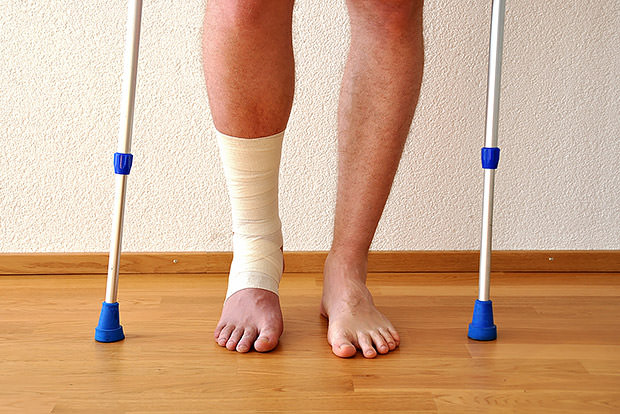
Invest in quality athletic shoes
Athletic shoes support proper alignment and cushion impact during activity, helping protect against injury. Your shoes should be replaced every 300 to 500 miles or every three to six months. If you perform a specific exercise two to three times a week, buy a sport-specific shoe. Cross trainers are ideal for various activities, but consider walking shoes, running shoes, or hiking boots if your workouts are more focused.
Athletic Shoes: A Buyer’s Guide
Make rest days a priority
Research shows that exercising more than 250 minutes per week results in clinically significant weight loss, but you shouldn’t skip rest days to meet that goal. The body uses rest days to recover and repair itself, improving fitness. If you skip rest days, you put yourself at risk of overuse injuries. Set aside one to two days weekly to rest or enjoy leisure activities, like a slow walk after dinner or working in the garden.
Get proper guidance
Proper exercise form can reduce the risk of injury and make your workouts more effective. Don’t jump into a new program without some guidance. Ask for instruction on using weight machines and use mirrors to evaluate your form. Seek alternatives for exercises that aggravate problems like knee or lower back pain. Safely executing your exercises will protect you from unnecessary injuries that can slow your progress.
Balance your training
Muscle strength imbalances occur when one muscle group gets more training than an opposing or supporting muscle group. Over time, these imbalances in strength can lead to injuries. For example, runners often have hamstring weakness that leads to muscle strains. Also, overworking the abdominals without including lower back exercises may result in back pain. Choose a variety of exercises that give attention to all muscle groups. Don’t skip an exercise altogether if you’ve come to dislike it. Seek out an alternative that will adequately strengthen the same muscle group.
Crosstrain
Engaging in the same activities over and over can improve your exercise performance, but you should add variety to your routine. Activities that require repetitive movements (like running and swimming) can lead to overuse injuries, such as shin splints and tendinitis. Cross-training is a simple way to incorporate new movements while continuing to build your fitness level. If you are training for an event that requires you to engage in a repetitive activity (like a 10K run), try adding high-intensity interval training (HIIT), hiking, group exercise classes, or water sports to reduce risk of injury.
Maintain flexibility
Maintaining flexibility reduces injury by allowing the joints to move through a full range of motion. Flexibility training does not have to be restricted to stretching before and after an exercise session. In fact, research reviews have concluded that there is no significant evidence to support the idea that stretching before or after your workout will decrease injury risk during that workout. However, you should incorporate flexibility training into your overall program. For some, this is easily done with full-body stretches after a workout, but others may choose activities such as yoga, Pilates, or martial arts to increase joint flexibility and reduce exercise injury.
Sources



 5 Ways to Burn 300 Calories this Weekend
5 Ways to Burn 300 Calories this Weekend
 The Best Home and Garden Chores for Burning Calories
The Best Home and Garden Chores for Burning Calories
 5 Tips for Making Exercise a Habit
5 Tips for Making Exercise a Habit
 Best Ways to Stay Safe during Exercise in Hot Weather
Best Ways to Stay Safe during Exercise in Hot Weather
 11 Tips for Exercise Motivation
11 Tips for Exercise Motivation
 Signs You Need to Increase Exercise Intensity
Signs You Need to Increase Exercise Intensity
 Mistakes to Avoid When Setting Fitness Goals
Mistakes to Avoid When Setting Fitness Goals
 Essential Gear for Starting an Exercise Program
Essential Gear for Starting an Exercise Program

 Pinterest
Pinterest RSS Feed
RSS Feed